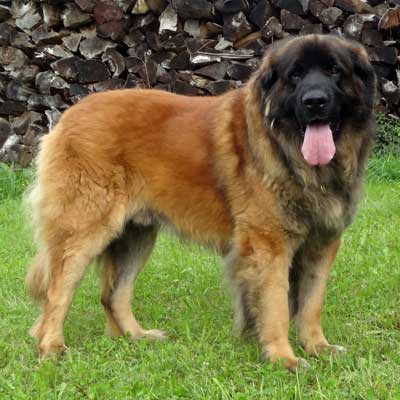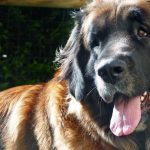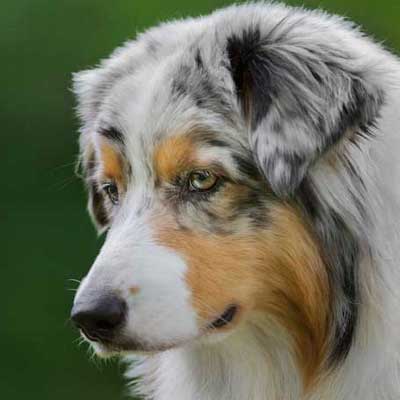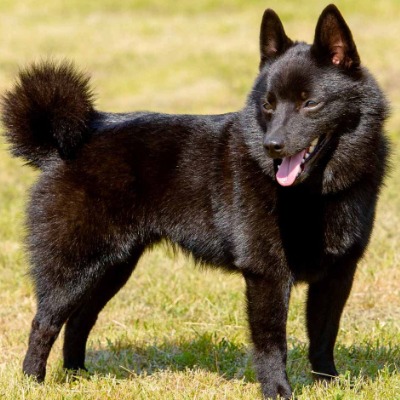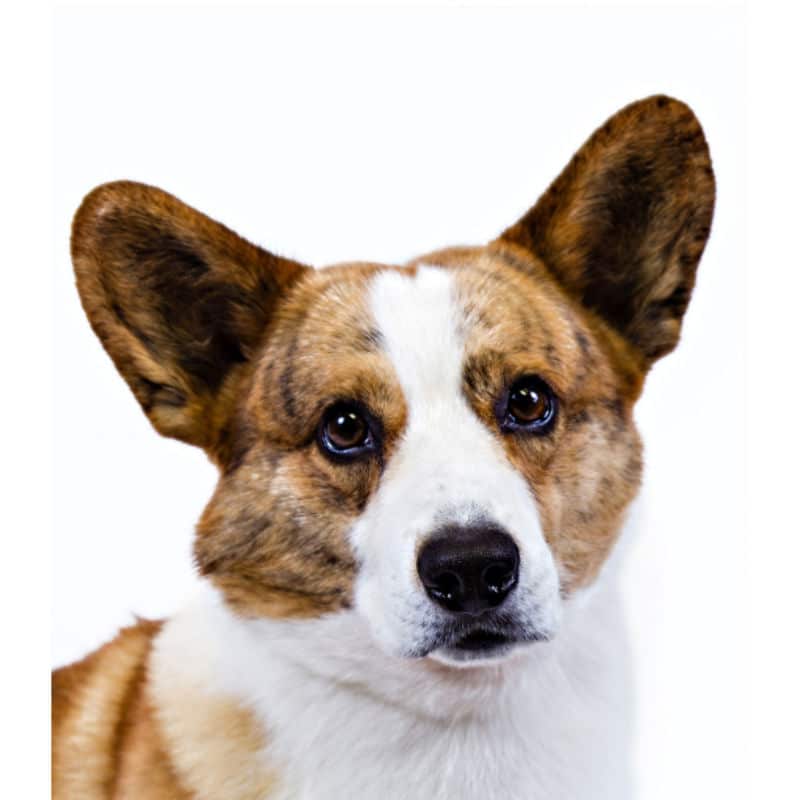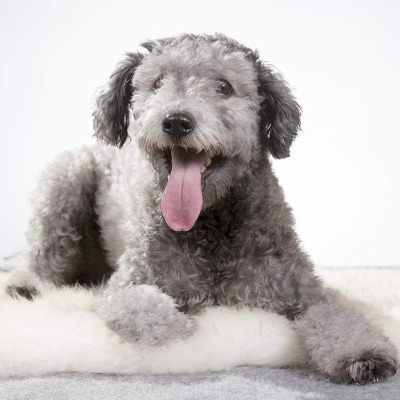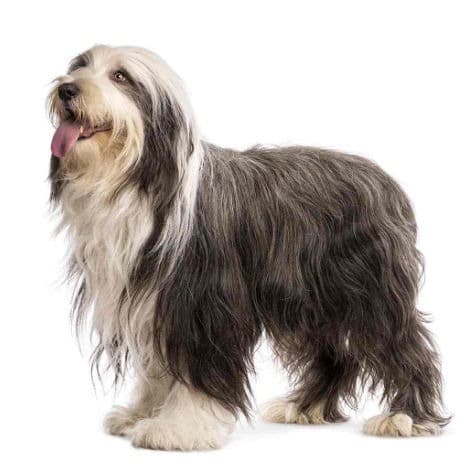Leonberger
Calm with the family, great in house defense due to his attention
At the end of the thirties, beginning of the forties of the 19th century, Heinrich Essig, town Councilor in Leonberg near Stuttgart, crossed a black and white Newfoundland bitch with a so-called “Barry” male from the monastery hospice Grand St. Bernhard . Later a Pyrenean Mountain Dog was added. This resulted in very large dogs with predominantly long, white coats. Essig's aim was for a lion-like dog.The lion is the heraldic animal of the city of Leonberg.The first dogs really called “Leonbergers” were born in 1846. They combined the excellent qualities of the breeds from which they stemmed. Only a short time later, many of these dogs were sold as status symbols from Leonberg all over the world.At the end of the 19th century, the Leonberger was kept in Baden-Württemberg as the preferred farm dog. His watch and draft abilities were much praised. In both World Wars and the needy post war times, the numbers of breeding stock reduced dramatically.Today the Leonberger is an excellent family dog which fulfills all the demands of modern life.
-
Head
Overall, it is taller than wide and rather elongated than gathered. The ratio between the length of the nose bridge and that of the skull is 1: 1.
The skin is adherent everywhere, without wrinkles
-
Head - cranial region
Skull: Viewed from the face and in profile, the skull is moderately rounded; powerful to be in harmony with the trunk and limbs, but not heavy. Its back is not much wider than at eye level.
Stop: clearly visible, but moderately marked -
Head - facial region
Black truffle
Muzzle: Rather long, never pointed; nasal bridge of uniform width, never concave, rather slightly arched (montanino nose).
Lips: Close fitting, black; well closed commissure
Jaws / Teeth: strong jaws with perfect regular and complete scissor bite, i.e. the posterior face of the upper incisors is in close contact with the anterior face of the lower incisors, with the teeth implanted.
perpendicular to the jaws; 42 healthy teeth according to the dental formula (lack of M3 tolerated. A pincer bite is allowed; no narrowing of the lower jaw
canines.
Cheeks: Only slightly developed.
Eyes: Light brown to dark brown as possible, of medium size, oval, neither deep set nor protruding, neither too close together nor too far apart. The eyelids adhere well to the shape of the eyeball. The conjunctiva must not be visible. The white of the eye (visible part of the sclera) is not red.
Ears: Set high and not too far back, drooping, of medium size, fleshy and close to cheek.
-
Neck
it is slightly arched, and blends harmoniously into the withers; a little long rather than short; without exaggeratedly loose skin or dewlap -
Body
Withers: Marked, especially in males
Back: solid, straight, broad
Loin: Broad, powerful, well muscled
Croup: broad, relatively long, gently rounded; progressively merges into the insertion of the tail; under no circumstances raised.
Chest: broad, deep, reaching a minimum to the level of the elbows, not too barrel-shaped, rather oval.
Bottom line: only slightly raised
-
Tail
with a lot of hair; falls straight in the station and is only slightly bent when the dog moves; if possible, not carried higher than the extension of the back.
-
Limbs
very strong, especially in males -
Forequarters
n general: straight, parallel and not too close together
Shoulders / Upper Arm: Long, sloping, not too obtuse at an angle, very muscular
Elbows: Close fitting to the body
Pasterns: Strong, solid, seen from the front straight, seen in profile almost vertical
Forefeet: Turning neither in nor out, rounded, with tightly knit and arched toes, black pads.
-
Hindquarters
In general: seen from behind, not too close together, parallel. Hocks and feet turned neither in nor out.
Pelvis: oblique
Upper thigh: Fairly long, in an oblique position, very muscular. The thigh and leg form a well-defined angle
Hock: solid, with marked angulation between the leg and the metatarsus
Hind feet: Direct straight forward, long without exaggeration; arched fingers; black bearings.
-
Gait / Movement
long strides, regular movement in all gaits; the forelegs carry well forward under the strong push of the hindquarters; when walking and trotting, seen from the front and back, the limbs move in a straight line. -
Coat - hair
of medium soft to rough texture, of a good length, well laid, without forming parting; despite the presence of a well developed undercoat, the shapes of the body remain well recognizable; the hair is straight, even if a slight waving is allowed; especially in the males, the hair forms a beautiful mane on the neck and chest, thick fringes at the front and an abundant culotte at the hindquarters -
Coat - color
lion yellow (light fawn), red, red-brown, as well as sand (pale yellow, cream color) and all shades between these colors, with black mask; black hair tips are allowed, but black should not predominate.
The lightening of the base color in the lower face of the tail, the mane, the fringes of the forelegs and the culotte of the hindquarters should not be marked to the point of damaging the harmony of the overall color of the coat.
A small white patch or a small white mark in the form of a narrow line on the chest is tolerated, as well as white hairs on the toes.
-
Size
Height at the withers
Males 72 - 80 cm - sought after average size 76 cm
Females 65 - 75 cm - medium size sought 70 cm -
Faults
any deviation from the above must be considered as a defect and the severity with which this defect will be penalized must be proportionate to its seriousness -
Disqualifying Faults
• Fearful or aggressive dog.
• Important anatomical defects.
• Brown nose
• Markedly insufficient pigment on the lips
• Lack of teeth (except M3), overshot and undershot bite, other bite defects
• Eye color other than brown in its various shades.
• Entropion, ectropion
• Tail visibly curled up or carried too high and curled up
• Brown bearings
• Curly or decidedly ringed hair
• Wrong colors: brown with brown nose and pads, black and tan, black, silver, wild animal color (wolf gray)
• Total lack of black mask
• Excess white (the white of the fingers that goes up to the carpus and tarsus, white spot on the chest that exceeds the size of a hand, white in other places.

